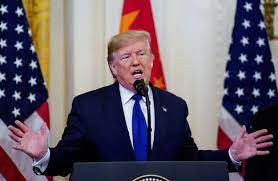Ayodhya's Ram Temple and the Shifting Sands of Indian Politics

Ayodhya's Ram Temple has long been a symbol of cultural and religious significance. However, beyond its spiritual importance, the temple has become a focal point for political maneuvering and ideological battles. In this editorial, we delve into the complex interplay between religion and politics surrounding the construction of the Ram Temple and its implications for the socio-political fabric of India.
The Ayodhya dispute has deep historical roots, dating back to the demolition of the Babri Masjid in 1992. Since then, the quest to build the Ram Temple has been entangled in legal battles, shaping and reshaping the political landscape over the years.
With the recent commencement of the Ram Temple's construction, the political narrative has taken a new turn. The groundbreaking ceremony in 2020 marked not only the beginning of a grand architectural endeavor but also a strategic move by political players to harness the sentiments attached to this religious monument.
The Ram Temple project has provided a fertile ground for the proliferation of nationalism and identity politics. Politicians, eager to tap into the religious sentiments of the masses, have woven the narrative of cultural pride and Hindu identity around the temple construction. This calculated maneuvering has influenced public opinion and electoral strategies.
While the construction of the Ram Temple is a momentous occasion for many, there are concerns about its potential impact on communal harmony. The intertwining of religious fervor with political agendas has the potential to polarize communities, raising questions about the inclusive ethos of the Indian democracy.
The legal journey of the Ayodhya dispute has been intricate, with the Supreme Court delivering a landmark verdict in 2019. The resolution, while settling the title dispute, did not entirely divorce the issue from political machinations. The legal framework remains a critical aspect of the larger narrative, shaping public perception and political discourse.
As the construction of the Ram Temple progresses, it is imperative to critically examine the evolving political dynamics. The temple stands not only as a religious symbol but also as a political monument, a testament to the intricate relationship between faith and governance in India. The challenge lies in ensuring that this historic endeavor contributes to the unity of the nation rather than becoming a source of division.
The politics surrounding Ayodhya's Ram Temple reflects the multifaceted nature of India's socio-political landscape. Navigating the delicate balance between religious sentiments and political pragmatism is crucial for fostering a harmonious society. As the nation witnesses the transformation of bricks and mortar into a sacred structure, it is equally essential to reflect on the evolving narrative of politics and faith in the world's largest democracy.
You might also like!















